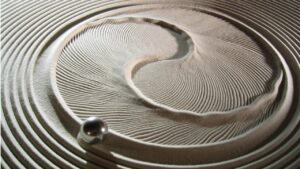overview:
In this assignment, I worked with Fady John to achieve the three exercises in class
Exercise 1:
p5 js
let left = 0;
function setup() {
createCanvas(400, 400);
}
function draw() {
background(220);
fill("red");
ellipse(left, 50, 50, 50);
}
function keyPressed() {
if (key == " ") {
// important to have in order to start the serial connection!!
setUpSerial();
}
}
function readSerial(data) {
left = map(data, 0, 1023, 0, 400);
}
Arduino:
//// Arduino Code
/*
void setup() {
// put your setup code here, to run once:
Serial.begin(9600);
}
void loop() {
// put your main code here, to run repeatedly:
int sensor = analogRead(A0);
delay(5);
Serial.println(sensor);
}
*/
Exercise 2:
P5 js
let brightnessSlider;
let brightnessValue = 0;
function setup() {
createCanvas(400, 200);
// Create a brightness slider
brightnessSlider = createSlider(0, 255, 128);
brightnessSlider.position(width/2-50, height/2);
brightnessSlider.style('width', '100px');
}
function draw() {
background(255);
// Get the brightness value from the slider
brightnessValue = brightnessSlider.value();
}
function keyPressed() {
if (key == " ") {
// important to have in order to start the serial connection!!
setUpSerial();
}
}
function readSerial(data) {
console.log(data);
let dataToSend = brightnessValue + ", \n";
writeSerial(dataToSend);
}
Arduino:
///Arduino COde
/*
const int ledPin = 9; // Digital output pin for the LED
void setup() {
pinMode(ledPin, OUTPUT);
// Start serial communication
Serial.begin(9600);
}
void loop() {
Serial.println("sensor");
// Check if data is available from p5.js
if (Serial.available() > 0) {
// Read the brightness value from p5.js
int brightness = Serial.parseInt();
// Map the received value to the LED brightness range
brightness = constrain(brightness, 0, 255);
// Set the LED brightness
analogWrite(ledPin, brightness);
}
}
*/
Exercise 3:
P5 js
let velocity;
let gravity;
let position;
let acceleration;
let wind;
let drag = 0.99;
let mass = 50;
let led = 0;
function setup() {
createCanvas(640, 360);
noFill();
position = createVector(width/2, 0);
velocity = createVector(0,0);
acceleration = createVector(0,0);
gravity = createVector(0, 0.5*mass);
wind = createVector(0,0);
}
function draw() {
background(255);
applyForce(wind);
applyForce(gravity);
velocity.add(acceleration);
velocity.mult(drag);
position.add(velocity);
acceleration.mult(0);
ellipse(position.x,position.y,mass,mass);
if (position.y > height-mass/2) {
velocity.y *= -0.9; // A little dampening when hitting the bottom
position.y = height-mass/2;
}
if(position.y == height-mass/2 && (velocity.y > 0.5 || velocity.y < -0.5)){
led = 1;
}else{
led = 0;
}
}
function applyForce(force){
// Newton's 2nd law: F = M * A
// or A = F / M
let f = p5.Vector.div(force, mass);
acceleration.add(f);
}
function keyPressed(){
if (key == "n") {
// important to have in order to start the serial connection!!
setUpSerial();
}
if (key==' '){
mass=random(15, 80);
position.y=-mass;
velocity.mult(0);
}
}
function readSerial(data) {
if (data != null) {
// make sure there is actually a message
// split the message
wind.x = data;
//////////////////////////////////
//SEND TO ARDUINO HERE (handshake)
//////////////////////////////////
let sendToArduino = led + "\n";
writeSerial(sendToArduino);
}
}
Arduino:
///Arduino COde
/*
int ledPin = 9;
void setup() {
// Start serial communication so we can send data
// over the USB connection to our p5js sketch
Serial.begin(9600);
pinMode(ledPin, OUTPUT);
}
void loop() {
int sensor = analogRead(A0);
int wind = map(sensor, 0, 1023, -2, 2);
Serial.println(wind);
delay(10);
if (Serial.available() > 0) {
// Read the brightness value from p5.js
int touch = Serial.parseInt();
// Set the LED brightness
digitalWrite(ledPin, touch);
}
}
*/
BOUNCING BALL VIDEO


![Christmas Gift [Handmade DIY] Pinball Game Board Game Wooden Toy Handmade DIY - Shop jwoodgarden Wood, Bamboo & Paper - Pinkoi](https://cdn01.pinkoi.com/product/T3UQSb8D/5/640x530.jpg)
